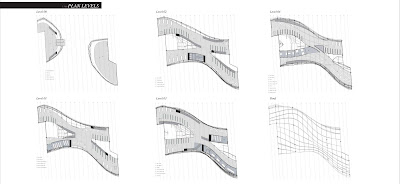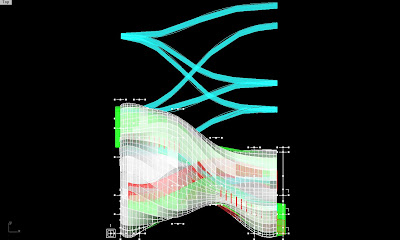A weaving programmatic layout is organised through the prior described spatial relations, locations and sizes. Studio spaces and book shelves weave in the inner part of the library, embrased by connectors and open spaces, contradicting the 'heavy' core in its function and expression. Following the paths guides the visitor in a vertical and horizontal movement, through enclosed environments to open spaces, from the inner to the outer places of the building. This movement allow for a series of different intimacies according to location within the house, as the visitor experience the open view and space towards the north (Pl. Gardunya), the enclosed vertical space (the two atria) and an outer narrow and intimate space to the south (garden). This movement is recognised in the surrounding Gothic Quarter, in the shift between narrow streets and open plazas, changing light conditions, enclosure, opening, tempo and mood. Book shelves contribute to the organisation to slow down movement in the open study spaces and to direct the view towards the placa and the garden.
































